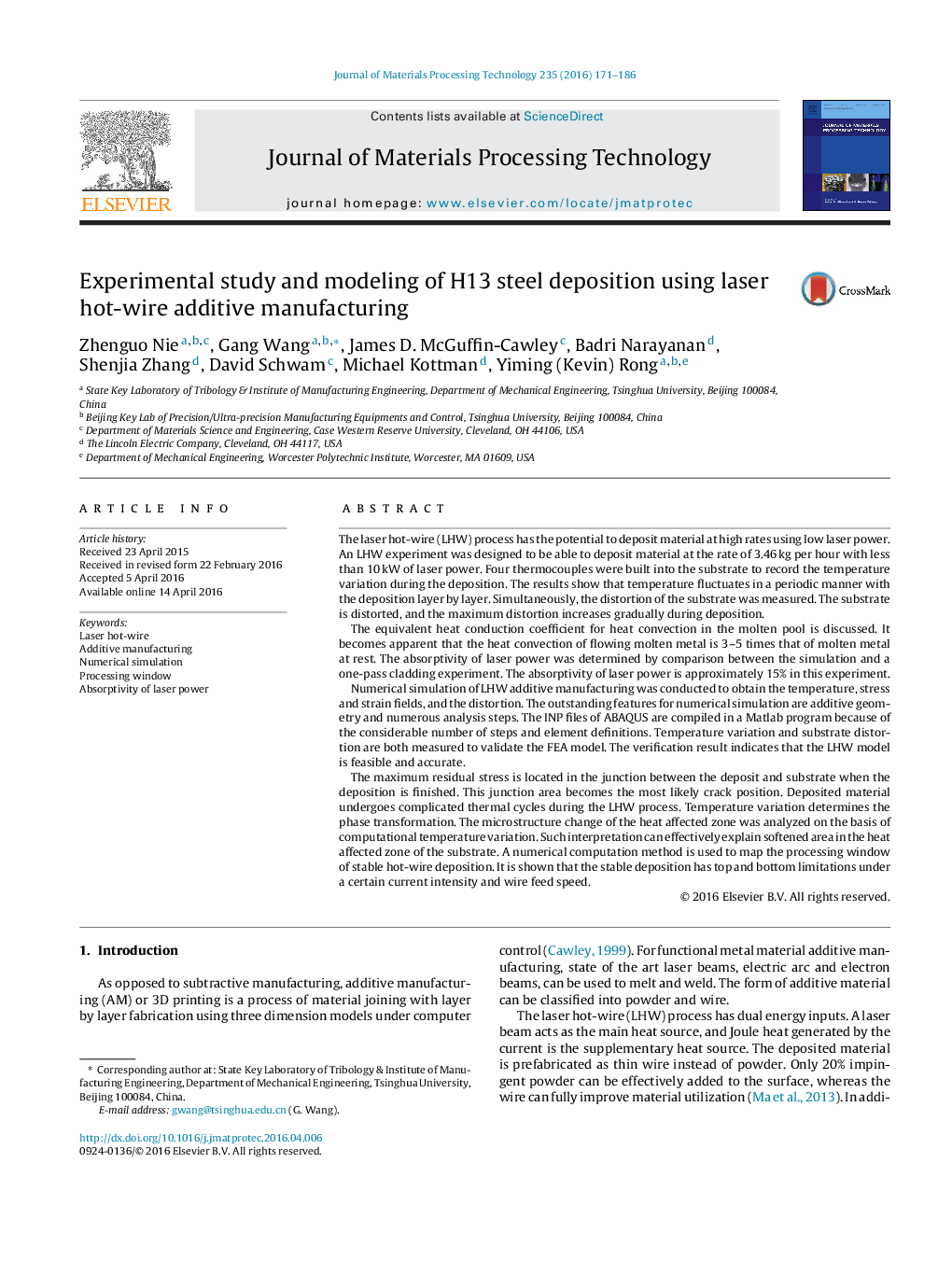| Article ID | Journal | Published Year | Pages | File Type |
|---|---|---|---|---|
| 790835 | Journal of Materials Processing Technology | 2016 | 16 Pages |
The laser hot-wire (LHW) process has the potential to deposit material at high rates using low laser power. An LHW experiment was designed to be able to deposit material at the rate of 3.46 kg per hour with less than 10 kW of laser power. Four thermocouples were built into the substrate to record the temperature variation during the deposition. The results show that temperature fluctuates in a periodic manner with the deposition layer by layer. Simultaneously, the distortion of the substrate was measured. The substrate is distorted, and the maximum distortion increases gradually during deposition.The equivalent heat conduction coefficient for heat convection in the molten pool is discussed. It becomes apparent that the heat convection of flowing molten metal is 3–5 times that of molten metal at rest. The absorptivity of laser power was determined by comparison between the simulation and a one-pass cladding experiment. The absorptivity of laser power is approximately 15% in this experiment.Numerical simulation of LHW additive manufacturing was conducted to obtain the temperature, stress and strain fields, and the distortion. The outstanding features for numerical simulation are additive geometry and numerous analysis steps. The INP files of ABAQUS are compiled in a Matlab program because of the considerable number of steps and element definitions. Temperature variation and substrate distortion are both measured to validate the FEA model. The verification result indicates that the LHW model is feasible and accurate.The maximum residual stress is located in the junction between the deposit and substrate when the deposition is finished. This junction area becomes the most likely crack position. Deposited material undergoes complicated thermal cycles during the LHW process. Temperature variation determines the phase transformation. The microstructure change of the heat affected zone was analyzed on the basis of computational temperature variation. Such interpretation can effectively explain softened area in the heat affected zone of the substrate. A numerical computation method is used to map the processing window of stable hot-wire deposition. It is shown that the stable deposition has top and bottom limitations under a certain current intensity and wire feed speed.
Graphical abstractFigure optionsDownload full-size imageDownload as PowerPoint slide
